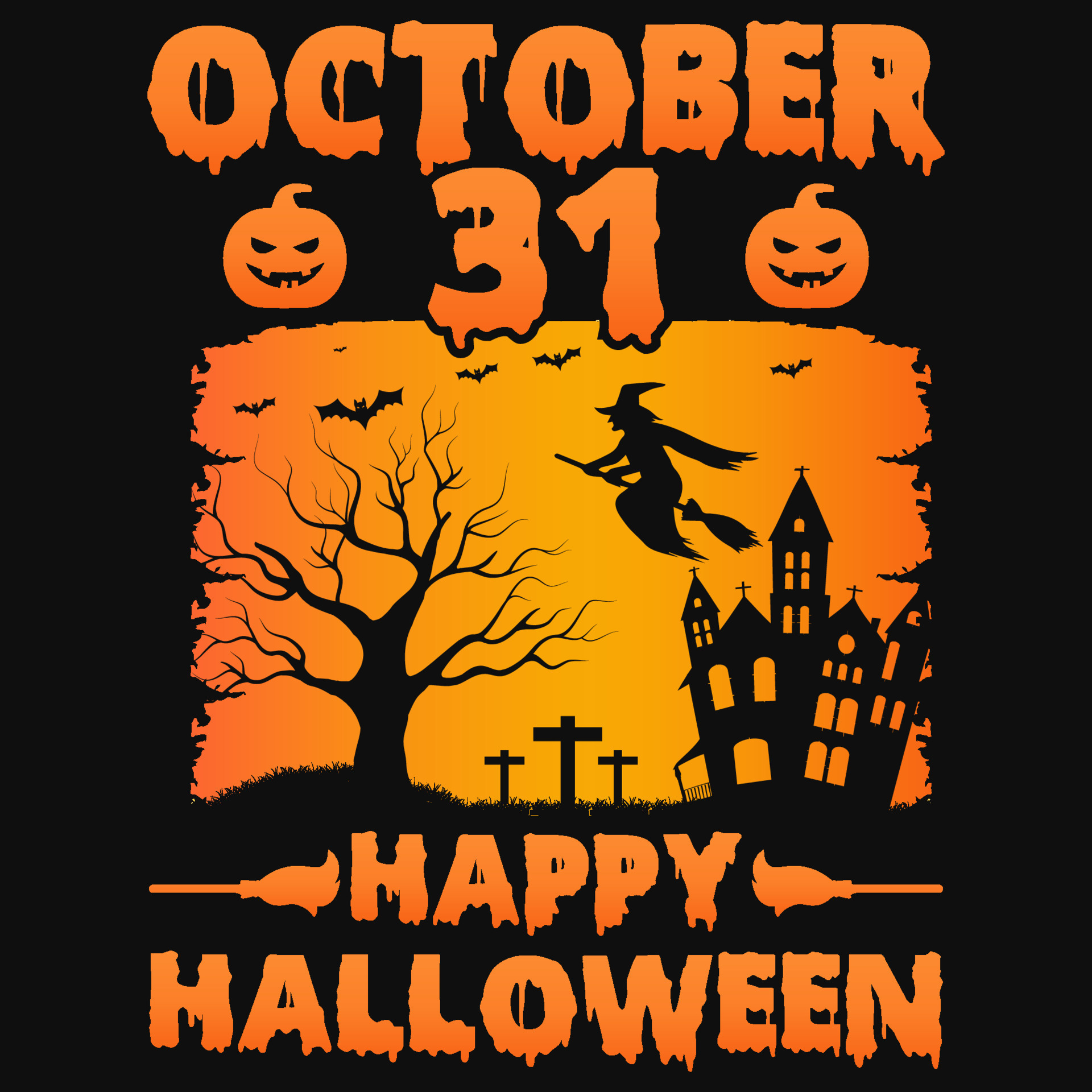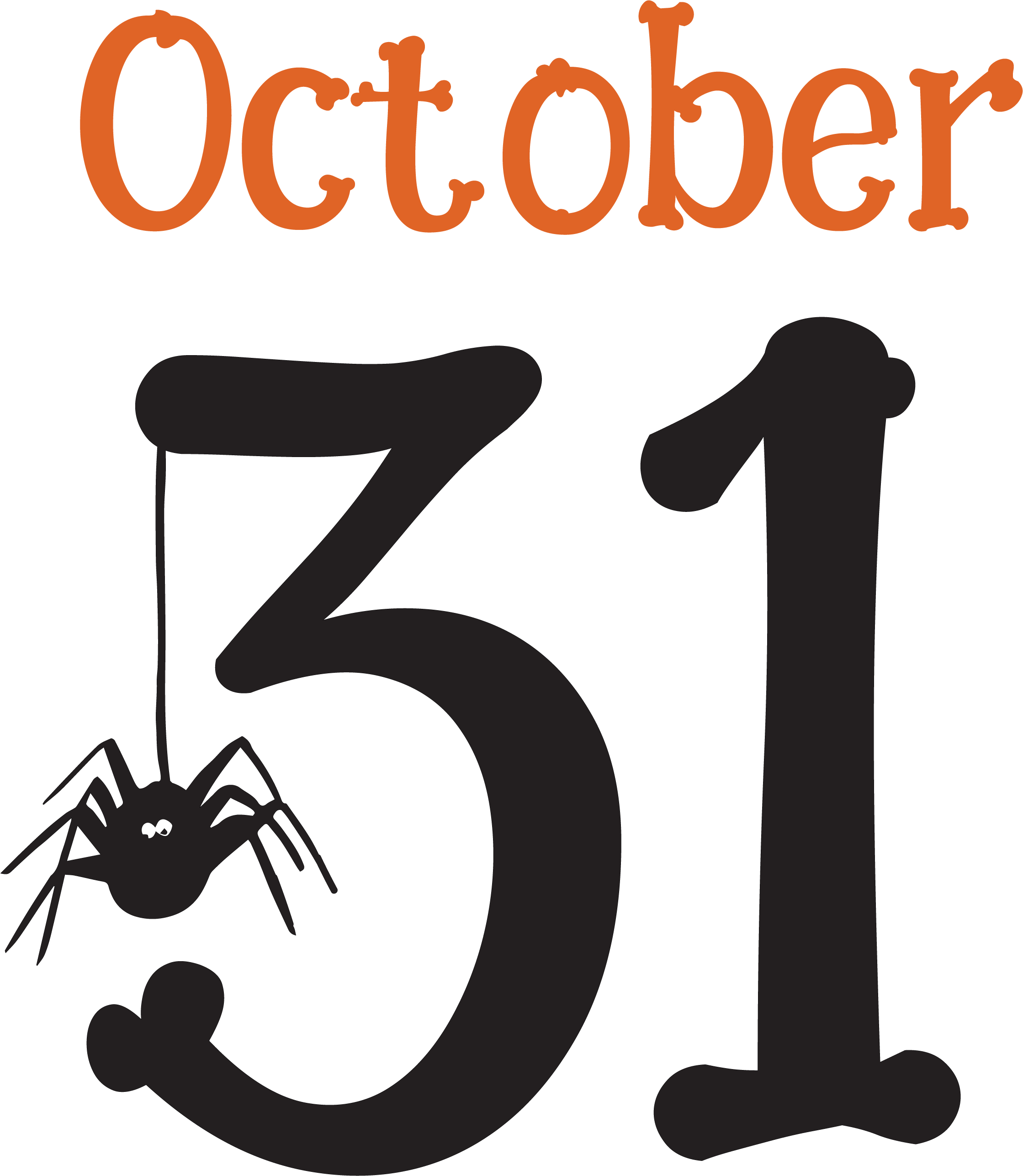Unveil The Spooky Secrets Of October 31st
What is the significance of October 31? It is a day known globally for its association with Halloween, a widely celebrated festival with deep cultural roots and contemporary relevance.
Originating from the ancient Celtic festival of Samhain, October 31 marked the end of the harvest season and the beginning of winter. It was believed that on this night, the boundary between the worlds of the living and the dead became blurred, allowing spirits to cross over.
Today, Halloween is celebrated with various traditions, including trick-or-treating, costume parties, bonfires, and pumpkin carving. It has evolved into a time for fun, community gatherings, and embracing the spooky and supernatural.
- George Jones Cd
- Who Is Angela Lansbury Married To
- Donald Glover Children
- Pierce Brosnan Children
- What Height Is Chappell Roan
Transition to main article topics
October 31
As a day steeped in tradition, history, and cultural significance, October 31 presents a multifaceted tapestry of key aspects that contribute to its unique identity and global appeal.
- Ancient Origins: Rooted in the Celtic festival of Samhain, marking the transition from summer to winter.
- Halloween Traditions: Celebrated with customs like trick-or-treating, costume parties, and pumpkin carving.
- Cultural Symbolism: Embodies the blurring of the boundary between life and death, inviting reflection on mortality.
- Community Spirit: Fosters a sense of togetherness through shared experiences and festive gatherings.
- Economic Impact: Generates billions in revenue worldwide through sales of costumes, candy, and decorations.
- Artistic Inspiration: Serves as a muse for countless works of literature, film, and music, capturing its eerie and imaginative essence.
These key aspects intertwine to create the rich tapestry of October 31. Its ancient origins connect us to our past, while its modern traditions bring communities together. The cultural symbolism invites contemplation, and the economic impact highlights its global reach. Furthermore, October 31 inspires creativity, sparking imaginations worldwide.
Ancient Origins
The Celtic festival of Samhain, celebrated on October 31, marked the end of the harvest season and the beginning of winter. It was believed that on this night, the boundary between the worlds of the living and the dead became blurred, allowing spirits to cross over. This belief is deeply connected to the origins of Halloween, as it provided the foundation for the festival's themes of death, spirits, and the supernatural.
The ancient origins of Halloween have shaped its modern-day traditions and cultural significance. The festival's focus on the transition from summer to winter reflects the cyclical nature of life and death. It serves as a reminder of the inevitability of death and the importance of cherishing the time we have.
Furthermore, the belief in spirits crossing over on Samhain has influenced Halloween's association with the supernatural. Many Halloween traditions, such as wearing costumes and carving pumpkins, are rooted in the belief that spirits could be warded off or appeased. These traditions continue to be practiced today, adding to the festival's unique and captivating atmosphere.
Understanding the ancient origins of Halloween provides a deeper appreciation for its traditions and cultural significance. It allows us to connect with the past and to reflect on the deeper meanings behind the festival's symbols and practices.
Halloween Traditions
Halloween traditions, such as trick-or-treating, costume parties, and pumpkin carving, are deeply intertwined with October 31st. These customs have evolved over centuries, influenced by various cultures and beliefs, and have become integral to the celebration of Halloween worldwide.
Trick-or-treating, where children dress up in costumes and go door-to-door collecting candy, originated from the ancient Celtic practice of leaving offerings of food and drink out for wandering spirits. Costume parties, on the other hand, have their roots in the belief that wearing disguises could ward off evil spirits or allow people to blend in with the supernatural realm.
Pumpkin carving, a more recent tradition, emerged in the 19th century. Pumpkins were carved with faces to represent the spirits and were often placed in windows or on doorsteps to ward off evil. Today, pumpkin carving has become a popular and creative activity associated with Halloween, with people creating elaborate and intricate designs.
The connection between these Halloween traditions and October 31st is significant as they collectively contribute to the unique atmosphere and cultural significance of the festival. They provide a way for people to engage with the themes of Halloween, such as the blurring of the boundary between the living and the dead, in a fun and interactive manner.
Understanding the connection between Halloween traditions and October 31st allows us to appreciate the historical and cultural roots of this festival. It also highlights the importance of preserving and passing down these traditions to future generations, ensuring the continuation of this beloved holiday.
Cultural Symbolism
October 31st holds significant cultural symbolism as it embodies the blurring of the boundary between life and death, inviting reflection on mortality. This symbolism is deeply embedded in the festival's origins and traditions.
The ancient Celtic festival of Samhain, from which Halloween evolved, marked the transition from summer to winter, a time when the veil between the worlds of the living and the dead was believed to be at its thinnest. This belief is reflected in Halloween traditions such as wearing costumes and masks, which allow participants to embody spirits or otherworldly beings.
The practice of carving pumpkins, with their illuminated faces, represents the guiding of spirits and the warding off of evil. These traditions serve as reminders of the ephemeral nature of life and the inevitability of death.
October 31st provides a unique opportunity for individuals to confront their own mortality and to reflect on the fragility of human existence. It encourages contemplation of life's purpose and the legacy one wishes to leave behind.
Understanding the cultural symbolism of October 31st allows us to appreciate the festival's deeper meaning and significance. It invites us to embrace the mystery of death and to celebrate the preciousness of life.
Community Spirit
October 31st embodies the spirit of community through shared experiences and festive gatherings that bring people together.
- Shared Experiences: Halloween traditions, such as trick-or-treating and costume parties, provide opportunities for individuals to interact and create shared memories. These experiences strengthen social bonds and foster a sense of belonging.
- Festive Gatherings: Community events, such as Halloween parades and festivals, offer platforms for people to come together, celebrate the holiday, and enjoy each other's company. These gatherings promote social cohesion and create a shared sense of identity.
- Intergenerational Connections: Halloween activities often involve multiple generations, with adults and children participating side-by-side. These interactions facilitate intergenerational bonding and the passing down of cultural traditions.
- Cultural Inclusivity: Halloween celebrations are welcoming to individuals from diverse backgrounds, providing a space for cultural exchange and understanding. This inclusivity fosters a sense of community that transcends cultural boundaries.
The community spirit fostered on October 31st reinforces social connections, promotes cultural preservation, and creates a sense of shared identity. It highlights the importance of community in human well-being and the role of festivals in bringing people together.
Economic Impact
October 31st has a significant economic impact, generating billions of dollars in revenue worldwide through the sales of costumes, candy, and decorations.
- Costume Sales:
The demand for Halloween costumes surges in the lead-up to October 31st, with individuals and businesses spending heavily on elaborate and unique attire. This contributes significantly to the revenue generated during this period.
- Candy Sales:
Candy is a staple of Halloween celebrations, with trick-or-treating being a popular tradition. The sale of candy, chocolates, and other treats experiences a significant boost in the weeks leading up to October 31st.
- Decoration Sales:
Decorations play a vital role in creating the festive atmosphere associated with Halloween. The sale of items such as pumpkins, haunted props, and spooky lighting contributes to the economic impact of October 31st.
- Job Creation:
The Halloween industry supports numerous jobs in various sectors, including retail, manufacturing, and tourism. The production, distribution, and sale of Halloween-related products and services create employment opportunities.
The economic impact of October 31st highlights its commercial importance and its role in stimulating economic activity. The revenue generated during this period supports businesses, creates jobs, and contributes to the overall economic growth.
Artistic Inspiration
October 31st has served as a rich source of inspiration for artistic expression across various mediums, including literature, film, and music. Its unique blend of the eerie and imaginative has captivated the minds of countless artists, leading to the creation of iconic works that explore the themes and atmosphere associated with this day.
In literature, Halloween has provided a backdrop for tales of mystery, horror, and the supernatural. From the classic Gothic novels of Edgar Allan Poe and Nathaniel Hawthorne to contemporary works by Stephen King and Anne Rice, authors have drawn upon the imagery and symbolism of October 31st to create unforgettable stories that both terrify and intrigue readers.
In film, Halloween has inspired a vast array of cinematic masterpieces, ranging from classic horror movies like "Psycho" and "The Exorcist" to family-friendly animated features like "It's the Great Pumpkin, Charlie Brown." These films have captured the essence of the holiday, utilizing its eerie atmosphere and imaginative possibilities to create memorable and impactful cinematic experiences.
Music has also been deeply influenced by October 31st. From the haunting melodies of classical composers like Camille Saint-Sans to the energetic rhythms of modern pop and rock songs, musicians have found inspiration in the themes and emotions associated with Halloween. This has resulted in a wide range of musical works that evoke the mysterious and captivating spirit of the holiday.
The connection between artistic inspiration and October 31st underscores the profound impact that this day has on the human imagination. It highlights the power of art to capture and express the essence of cultural experiences and emotions, allowing us to explore the depths of our own imaginations and connect with others through shared artistic experiences.
FAQs about October 31st
This section addresses frequently asked questions and misconceptions surrounding October 31st, providing clear and informative answers to enhance understanding of this significant day.
Question 1: What is the historical significance of October 31st?
Answer: October 31st holds historical significance as the date associated with the ancient Celtic festival of Samhain. This festival marked the end of the harvest season and the beginning of winter, and it was believed that on this night, the boundary between the worlds of the living and the dead became blurred.
Question 2: Why is October 31st associated with Halloween?
Answer: The traditions and festivities of Halloween have their roots in the ancient Celtic festival of Samhain. Over time, as Christianity spread across Europe, the influence of Samhain blended with Christian traditions, giving rise to the modern-day celebration of Halloween.
Summary of key takeaways: October 31st is a day steeped in history and cultural significance, with its origins in the ancient Celtic festival of Samhain. This day continues to be celebrated worldwide through various traditions and festivities, embodying themes of the supernatural, the blurring of boundaries, and the remembrance of the departed.
Conclusion
October 31st stands as a day of cultural significance, steeped in history and tradition. Its origins in the ancient Celtic festival of Samhain have shaped its modern-day celebrations, which encompass themes of remembrance, the supernatural, and the blurring of boundaries.
The exploration of October 31st through various facets reveals its multifaceted nature. From its historical roots to its contemporary traditions, this day serves as a reminder of our connection to the past and the continuity of cultural practices. Halloween festivities offer opportunities for community building, artistic expression, and the exploration of the eerie and imaginative.
- Justdoinghomeworkcom
- Did Tom Holland Propose
- Who Is Angela Lansbury Married To
- Donald Glover Children
- Barry Statham

October 31 happy Halloween graphics tshirt design 21978604 Vector Art

October 31 SVG Cut File Snap Click Supply Co.

October 31 What Zodiac Sign